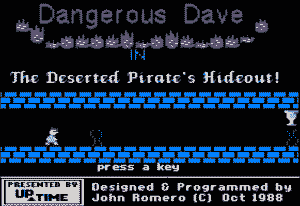Retro Replay Review
Gameplay
A.I. presents a deceptively simple yet deeply engaging challenge: players begin by defining their own winning conditions on a go-like grid—four in a row horizontally, vertically, or diagonally, for instance—and then invite the artificial intelligence to learn and master these rules. Unlike many contemporaries, the game hands over rule-making power to the human player, creating a unique blend of creativity and competition. This open-ended approach encourages experimentation, as each variation of rules yields a fresh set of strategies and counter-strategies.
(HEY YOU!! We hope you enjoy! We try not to run ads. So basically, this is a very expensive hobby running this site. Please consider joining us for updates, forums, and more. Network w/ us to make some cash or friends while retro gaming, and you can win some free retro games for posting. Okay, carry on 👍)
As the AI opponent learns, it actively queries the player after each move with straightforward questions like “Have I won with this configuration?” Over the course of repeated plays, the routines refine their decision-making heuristics, factoring in both offensive and defensive patterns. Novice players will enjoy discovering how small tweaks to the rules alter the AI’s behavior, while more experienced users can dive into the game’s code routines, observe the learning algorithms in action, and even program custom evaluation functions to test new ideas.
The pacing of A.I. is deliberately thoughtful. Matches tend to unfold methodically, giving the player time to study the AI’s evolving tactics and plan countermeasures. This deliberate tempo transforms each session into both a game and a lesson in pattern recognition. Replayability is high: with a new rule set, the AI starts from scratch, turning every round into a fresh exploration of logical consequences and strategic possibilities.
Graphics
Running on the Apple II platform, A.I. employs a minimalist, monochrome display that emphasizes clarity over flash. The game board is rendered with crisp, high-contrast lines, and each playing piece appears as a simple geometric glyph. While this may strike modern eyes as rudimentary, the design is perfectly suited to the core educational goal: to spotlight patterns and sequences without visual distraction.
The interface uses text prompts and basic cursor controls, allowing players to place pieces and respond to the AI’s questions with minimal fuss. There are no elaborate animations or sound effects—every element serves the sole purpose of reinforcing the learning experience. This stripped-down aesthetic also ensures swift performance even on early hardware, with near-instant feedback after each move.
For retro enthusiasts, the graphics hold nostalgic charm. Watching the grid update in real time, marker by marker, evokes an era when gameplay ingenuity mattered more than graphical horsepower. The black-and-white presentation may feel austere today, but it remains functional, legible, and surprisingly timeless in its ability to convey critical information at a glance.
Story
Though A.I. lacks a traditional narrative, it weaves a meta-story about human-machine collaboration. You take on the role of both rule-setter and tutor, guiding a digital student through the fundamentals of logic and pattern recognition. Each match becomes a chapter in this learning journey, as the AI gradually internalizes the rules you define and adapts its play style.
The game establishes its “plot” through dialogue-like prompts: the AI asks for clarification, you provide feedback, and then you observe the results on the board. This conversational framework gives the software a friendly, inquisitive persona—an effective way to engage young learners and foster curiosity. Even without cutscenes or character backstories, the back-and-forth exchange creates a sense of rapport.
Ultimately, the “story” of A.I. is one of discovery. There’s no villain to vanquish or treasure to claim—only the satisfaction of witnessing an artificial mind evolve from scratch. For educators and students, that process can be more compelling than any scripted plot, as each new lesson emerges organically from gameplay itself.
Overall Experience
A.I. stands out as a pioneering title in educational gaming. Its blend of user-defined rules and adaptive learning algorithms offers a hands-on introduction to artificial intelligence concepts that remains relevant decades later. The deliberate pace encourages reflection, while the freedom to tweak ruleset parameters unleashes creativity and critical thinking.
For grade-school audiences, A.I. serves as both a tutor and a playground. Younger players learn to recognize patterns and anticipate outcomes, while more advanced users gain exposure to heuristic approaches and algorithmic thinking. Teachers and parents will appreciate the software’s capacity to demystify abstract computing concepts through interactive play.
Though its visuals and interface are products of the Apple II era, A.I.’s educational value and intellectual depth transcend its vintage limitations. Whether you’re a retro collector, an educator seeking a historical case study, or simply a curious gamer interested in the roots of artificial intelligence software, A.I. delivers an experience that is as informative as it is engaging.
 Retro Replay Retro Replay gaming reviews, news, emulation, geek stuff and more!
Retro Replay Retro Replay gaming reviews, news, emulation, geek stuff and more!





Reviews
There are no reviews yet.